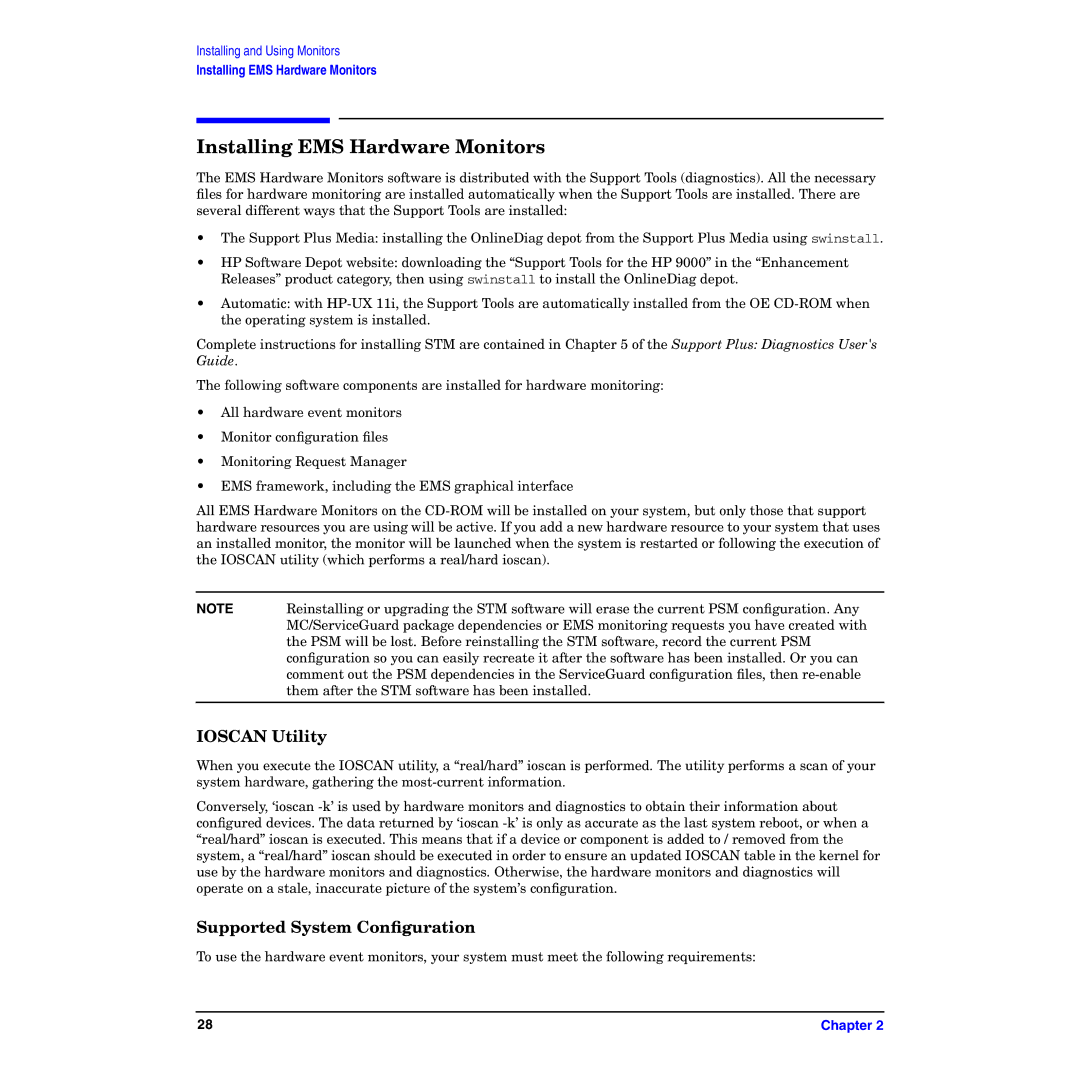
Installing and Using Monitors
Installing EMS Hardware Monitors
Installing EMS Hardware Monitors
The EMS Hardware Monitors software is distributed with the Support Tools (diagnostics). All the necessary files for hardware monitoring are installed automatically when the Support Tools are installed. There are several different ways that the Support Tools are installed:
•The Support Plus Media: installing the OnlineDiag depot from the Support Plus Media using swinstall.
•HP Software Depot website: downloading the “Support Tools for the HP 9000” in the “Enhancement Releases” product category, then using swinstall to install the OnlineDiag depot.
•Automatic: with
Complete instructions for installing STM are contained in Chapter 5 of the Support Plus: Diagnostics User's Guide.
The following software components are installed for hardware monitoring:
•All hardware event monitors
•Monitor configuration files
•Monitoring Request Manager
•EMS framework, including the EMS graphical interface
All EMS Hardware Monitors on the
NOTE | Reinstalling or upgrading the STM software will erase the current PSM configuration. Any |
| MC/ServiceGuard package dependencies or EMS monitoring requests you have created with |
| the PSM will be lost. Before reinstalling the STM software, record the current PSM |
| configuration so you can easily recreate it after the software has been installed. Or you can |
| comment out the PSM dependencies in the ServiceGuard configuration files, then |
| them after the STM software has been installed. |
|
|
IOSCAN Utility
When you execute the IOSCAN utility, a “real/hard” ioscan is performed. The utility performs a scan of your system hardware, gathering the
Conversely, ‘ioscan
Supported System Configuration
To use the hardware event monitors, your system must meet the following requirements:
28 | Chapter 2 |
